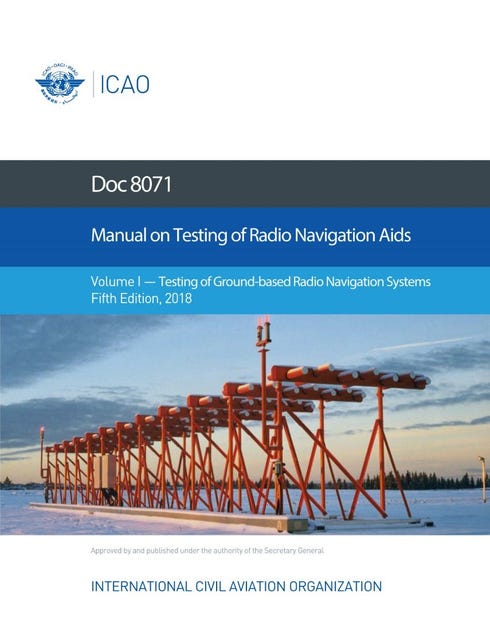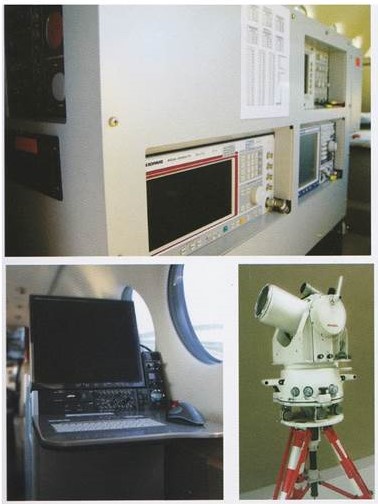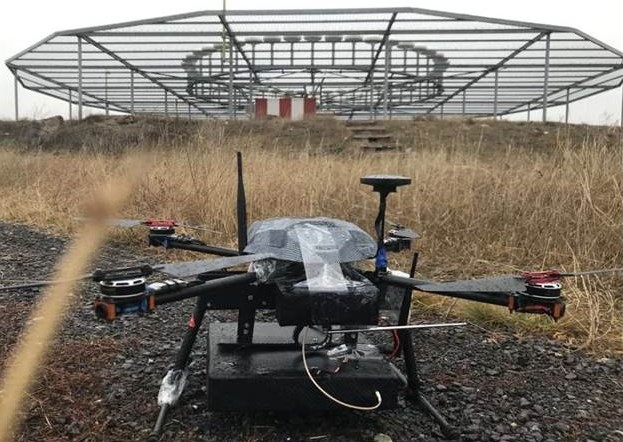Around the world, pilots rely on a myriad of communications, navigation and surveillance systems to fly safely. To ensure operational readiness, flight calibration services operators routinely measure and calibrate the airways using flight calibration aircraft equipped with sophisticated flight inspection technology. The combination provides a nimble, reliable, cost-effective platform for certifying airport navigational aids to incredibly precise tolerances. Calibration is an activity that ensures the correctness of the values indicated by measuring instruments or measurement systems or values enshrined in a measuring material by comparing them with conventional values represented by measuring standards that have traceability to national or international standards.
 Though ICAO Doc 8071 addresses the parameters of flight inspection Systems, individual flight inspection organizations must determine the best profile for each facility. Flight precision, with specific responsibilities for tasking, choice, and variation of individual runs, can lead to interpreting operational issues and the results of an inspection in different ways. Liaison between all customers brings the potential for discussions on the suitability of a navigational aid when inspected by different organizations.
Though ICAO Doc 8071 addresses the parameters of flight inspection Systems, individual flight inspection organizations must determine the best profile for each facility. Flight precision, with specific responsibilities for tasking, choice, and variation of individual runs, can lead to interpreting operational issues and the results of an inspection in different ways. Liaison between all customers brings the potential for discussions on the suitability of a navigational aid when inspected by different organizations.
Since 1960 in Indonesia, under Indonesia’s Directorate General of Civil Aviation, the Center for Flight Facilitation Calibration (Balai Besar Kalibrasi Fasilitas Penerbangan/BBKFP) has been responsible for calibrating navaids and validating instrument flight procedures. The BBKFP ensures navigational and landing aids meet international standards.
Aeronautical authorities must be encouraged to consider the importance of setting specific regulations for flight inspection crew duty and flight time, in order to increase the safety level in the flight inspection operations. Flight inspection activities are complex and demanding from one day to the next. To obtain high-quality flight check results, crews must continuously aim to respond professionally, in the most efficient and effective ways, particularly in congested airspaces.
Our very sophisticated analysis software takes the data and translates it into information that can be read by trained individuals. The software further automates much of the analysis process, by comparing it against a pre-defined set of events and finds instances where performance falls outside of what would be considered normal for the phase of flight.

Being able to run a flight inspection unit economically in today’s regulatory framework, while at the same time meeting the quality and cost criteria of clients, is an extraordinary challenge for the qualification of both staff and management. The BBKFP decided to support other States in optimizing their operations, assisting with troubleshooting, and providing training for flight inspection and maintenance staff.
In the field of flight inspection BBKFP inspects the following systems: ILS CAT I to III, MLS, PAR, (D)VOR, DME, TACAN, NDB, GBAS, VHF and UHF radio direction finders and COM systems, PAPI and visual aids/air field lighting.
In the field of flight validation, BBKFP validates RNP (GPS RNAV and conventional) procedures), P-RNAV (DME-DME), LPV/APV SBAS precision approaches. Supplanting GPS-based procedure validation; BBKFP performs ARINC 424 and FMS database validation services.
The third main segment of BBKFP flying activities is flight-testing of surveillance systems, i.e. primary radar, secondary radar (SSR/ MSSR) as well as PAR.
Despite COVID-19 restrictions in 2021, BBKFP provided service to 139 airports and completed calibrations of 79 ILS, 75 DVOR/DME, 149 PAPIs and one Radar system. Similar services were also provided to two airports of another State in the Region.
Flight inspection during the COVID-19 pandemic
The main purpose of the BBKFP was to ensure that flight inspection maintained the safe operation of navigational aids during the pandemic and to avoid a critical path to aviation recovery after the pandemic. There was a need for maintaining regular ground and flight checks of Navaids to ensure that they are available during the pandemic.
Ground testing was carried out as required and in accordance with the local COVID-related health precautions and more specifically to the ground maintenance staff. In order to sustain the flight inspection schedule, notwithstanding the pandemic-related difficulties, Indonesia adopted special health safety procedures and operational measures.
While flight inspection operations have been, to some extent, facilitated by the low air traffic levels currently prevailing, overall, significant operational restrictions were experienced, calling for special measures to mitigate them.
One common approach adopted for flight inspection operations during the pandemic involved keeping individual missions within a single day with a return to base at the end of the day, thereby avoiding overnight stays at the destination. In some cases, flight inspection services encountered specific issues:
- requirements for special authorization to access aerodromes that would otherwise be closed to all traffic;
- requirements for special authorization for crew access to aerodrome;
- requirements for quarantine on crew arrival to destination and return to base;

These issues were largely unexpected, due to the situation being effectively unprecedented, and were not taken into account in the original inspection schedules. The situation called for ad-hoc adjustments that were addressed bilaterally, on a case-by-case basis by the entities involved, and led to scheduling delays. However, notwithstanding the delays, flight calibration has remained largely feasible thanks to the commitment of all the parties to the flight inspection requirements. Flight inspection was feasible even in COVID-19 times, possibly with some restrictions requiring prioritization/rearranging of schedule as discussed above.
UAV flight inspection
The UAV system is mainly composed of three parts, mainly including the UAV, the UAV ground control station, a data communication system, mission load, support, and the maintenance system. The UAV flight inspection system mainly includes two parts, air, and ground. The air part includes UAVs, multi-mode receivers and processing systems capable of receiving navigation signals such as GPS\ILS\VOR\DME\NDB\MB, transmission system, the ground part mainly has a UAV control station, flight check data analysis and processing system, GPS precise positioning system station, data transmission system
The ordinary airborne flight inspection navigation evaluation system needs to collect and process the spatial signals to be evaluated and generate an evaluation report. The basic inspection principle of the flight inspection system requires the precise positioning of the inspection aircraft itself and compares the collected navigation signals with the ideal signals that should be provided at the position to obtain flight inspection data and errors. After flight inspection, ground navigation equipment could be adjusted to allow the spatial signal to ultimately meet operational specifications.
Once construction of the UAV flight inspection platform is completed, the next step will be to carry out a flight inspection. There are two modes of doing this. One is an automatic autonomous flight that collects air data. This requires pre-setting the calibration subjects and flight lines of the UAV according to the flight procedure. The second is where the UAV transmits the collected data back to the ground data processing center in real-time and determines whether to adjust the ground equipment according to the air parameters.

Currently, the biggest difficulty in implementing UAV flight inspection is that States have not yet issued relevant regulations and technical standards to support it. There is also no calibration equipment specially designed for UAV calibration and the existing calibration equipment is too large in size.
As UAV technology and the establishment of relevant legislation continues to develop, the use of UAV inspection will greatly reduce the cost of flight inspection. As a result, the trend will continue to use UAVs for flight inspection in the future.
Conclusion
Flight-testing will be important in the proof of facility performance because it represents in-flight evaluation and provides a sampling of the radiated signals in the operating environment. Additionally, flight Inspection will provide more than just a need to satisfy the mandated requirements of Annex 10. The role a calibration unit plays may vary between countries, the basic service is essential for ensuring that facilities provide a safe service to users. In the increasingly demanding environment we work in, efforts were made to reduce the impact of flight inspection without reducing the safety role that the service provides.
BBKFP is continuously trying to be more efficient and does not ignore the real opportunities to reduce the impact of Inspections, without losing the extensive benefits of the work carried out.
Dr. Afen Sena is a Transportation Attache and the Alternate Representative of Indonesia to ICAO. He has served at operational and management levels in air traffic control, pilot services and training in Indonesia and has a Doctorate of Education (EdD) focused in Education Management from the State University of Jakarta.

